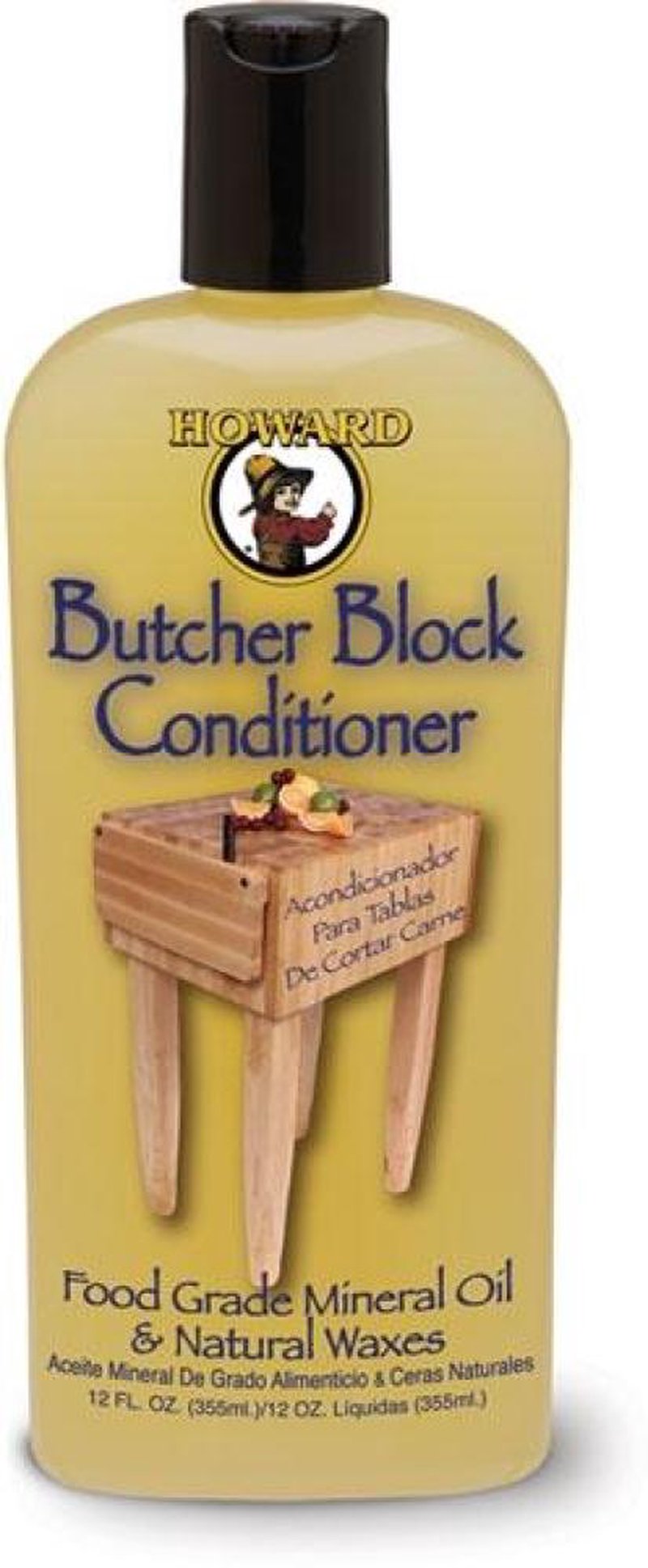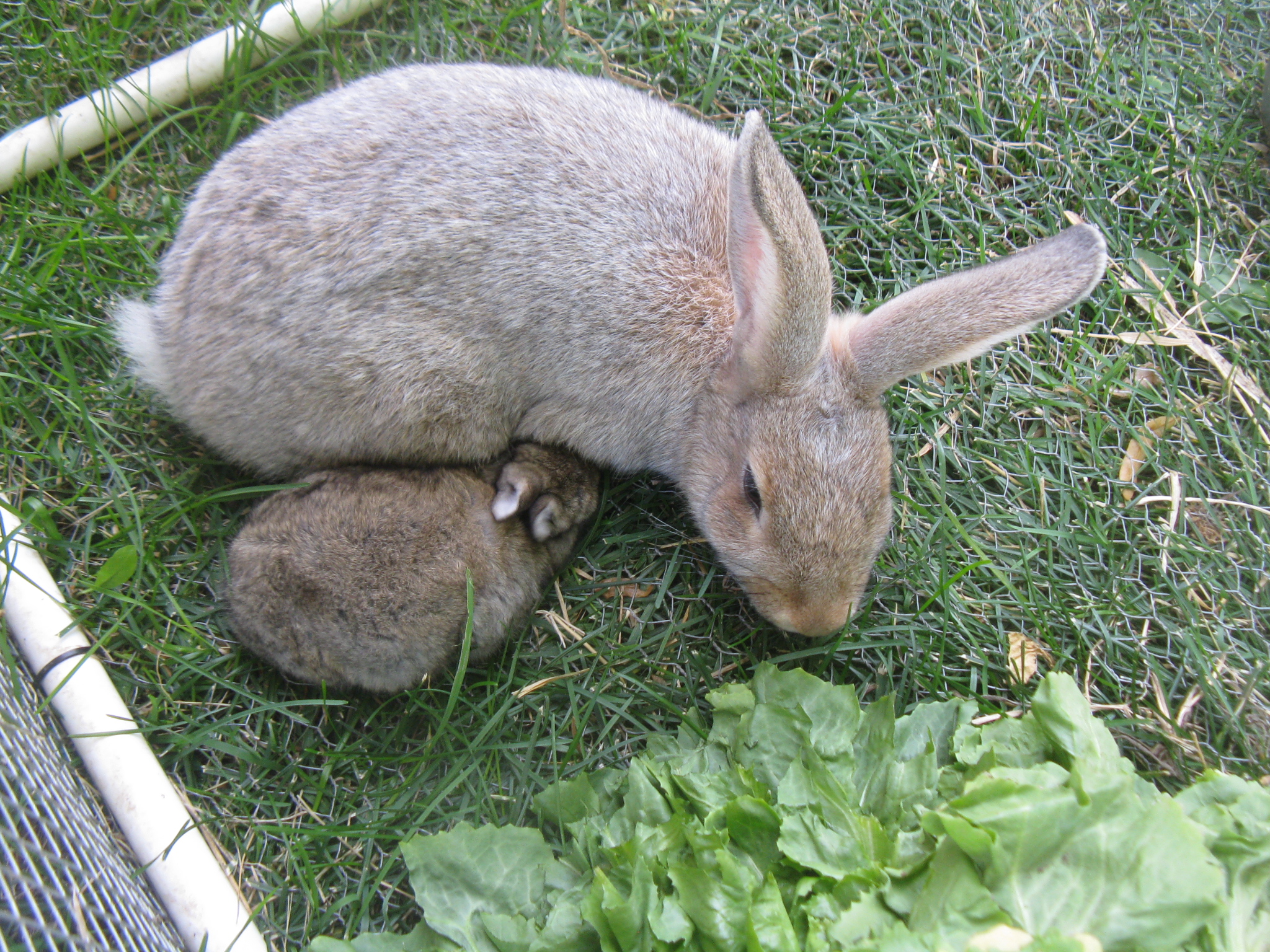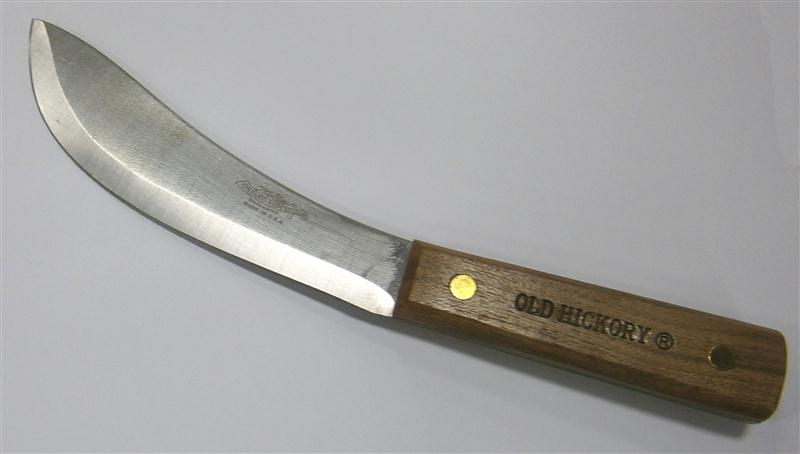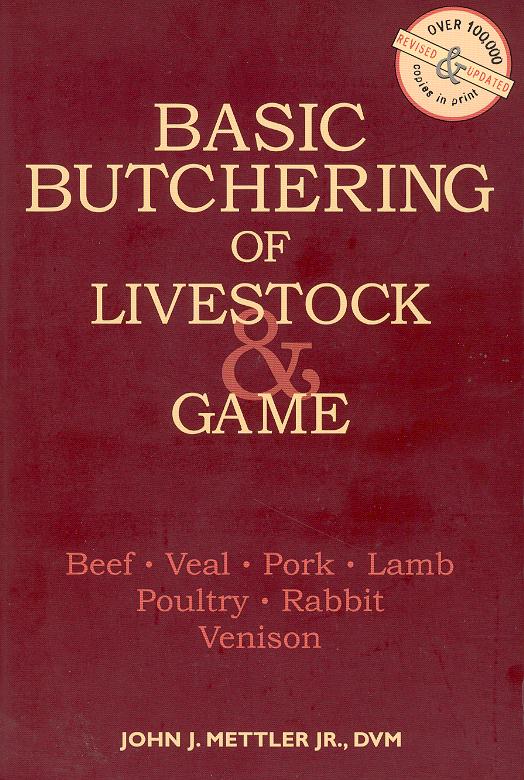
In this article, the author discusses both how she raises and butchers rabbits, with specific steps on how she dresses the rabbits out for meat. This article may not be appropriate for all readers.
Getting Started
I’m a vegetable farmer in Minnesota, bound to the seasons, and I was confronted with a slow spring in 2013. As I was waiting to be able to start planting in the field (that finally happened on April 28 and was followed 3 days later by 15 inches of snow), I had a lot of creative energy to use. So when a friend was trying to get rid of her rabbitry so she wouldn’t have to move it across the country with her, I jumped on the idea.
I had a tiny bit of experience with rabbits going in, from a farm internship I had right out of college, but mostly I had to figure everything out on my own—I asked friends, searched the web, and paged my handy-dandy Encyclopedia of Country Living for advice. I learned that about 150 years ago, rabbits and chickens were about even on the dinner table, but somehow chickens got the upper hand in the market and now we hardly ever think about rabbits as meat!

Besides their meat, rabbits provide a couple other benefits for a homesteader.
Firstly, their manure is extremely rich and nutritious, and relatively easy to handle. Often, rabbit hutches are set off the ground so that the pellets can drop down, compost, and be collected easily to be spread on gardens.
Secondly, they’re incredibly easy to feed. Rabbits are one of those well-adapted kinds of animals that can thrive on grass and hay—people certainly can’t do that! During the growing season, I’m able to feed my 5 breeding rabbits with grass that I’ve cut from my lawn and woods, abundant weeds from my garden, and some leafy vegetable scraps. In the winter, they get to eat hay, supplemented with a bit of grain and root vegetables such as turnips.
Finally, rabbits have a very exciting by-product: their hide. Being able to honor an animal that I’ve butchered by preserving and using its hide means a lot to me.

So, in a spirit of adventure, I embarked on a rabbit-raising enterprise. I make my living from farming, and so, at least in theory, I would like the rabbits to be able to pay their own way. That did not happen this first season, for a couple reasons: I didn’t get started breeding very early, so the two does that I had in production this year each only produced 2 litters (the breed that I have, crème d’argent, averages about 5 kits per litter).
Additionally, if I want to sell the rabbit meat commercially, I have to have it processed in a USDA-inspected facility. Since rabbits are a rare kind of meat in this day and age, finding a processor that will butcher them is a task in and of itself. The only one I’ve been able to find in my area requires a batch of 20 rabbits in order to schedule a processing. This means that my production for this year all went to household use, and raising up a couple more breeding does. My goals for the rabbits in 2014 is to breed all four of my does at once, in hopes of getting a batch of 20 kits—the minimum scale for selling rabbit meat in my area.
In retrospect, I am glad that the spring was slow, because out of it I got to begin adventures in livestock. I enjoy my rabbits (watching baby bunnies fight over dandelion stems provided a great deal of amusement this summer), so I don’t feel that turning a monetary profit from them is an urgent priority. Just two does and a buck provide plenty of delicious meat on a homestead scale, and raising just a couple more does should be able produce enough for me to turn a profit.
Butchering
When people find out that I raise rabbits for meat, their first question is, “Is it hard?” They are, of course, referring to the fact that rabbits are cute, and perhaps killing them is emotionally fraught. My reply has several different layers.
The surface answer is that yes, of course it is hard. Going from feeding it one morning, to picking it up one afternoon, snapping its neck and turning it into meat is a remarkably abrupt transition—The first time that I butchered two in a row, I was left “feeling like a horrible person” for about a day after that. I think that’s healthy though. I wouldn’t want to kill something and not feel it.
And that leads to the deeper layer of my answer—I don’t want to eat food and not feel it. I am dependent on the lives and health of many different creatures and ecological systems, and I feel that butchering my own meat is a means, for me, of acknowledging that dependence. I believe that farms should imitate nature, and I know that nature never attempts to farm without livestock, and so I believe in eating meat. And if I believe in eating meat, on principle I think that I should know how to give thanks and kill and prepare it myself.

So, to kill a rabbit: I’m no expert, but I’ve done it several times now. My method requires a small, simple list of tools: a broom, twine and a place to hang from, a good sharp knife, and a gut bucket and a bowl.
I make sure I have everything I need before I bring the rabbit into the picture, so that the process will go quickly. I choose my rabbit, and I hold it firmly on the floor. I put the broom handle over its neck, right behind the ears, and put my foot on one end of the handle to hold it down. Then, I hold the rabbit by its back legs, step down on the other side of the broom handle with my other foot, and quickly pull up on the legs. I can feel the neck snap. I let go for about 30 seconds, while the rabbit twitches. Sometimes they kick a lot, and other times they barely move.
Once the rabbit is still, I tie up each of its back feet and hang it upside-down. I cut off its head (usually at the break that I made in its neck), its front feet at the joint, and its tail. Then, I cut the skin around each of its back feet, and cut a line from each of its back feet to the anus. I know this sounds easy, and conceptually it is, but I have something of a hard time making cuts in a straight line, and actually finding the anus to cut around it well. The glory of rabbit raising is that there are a lot to practice on over time. But once these cuts have been made, the rabbit’s skin pulls off very easily, like taking off a shirt. I will leave “what to do with the pelt” for another blog post.

Now that the skin is off, all that remains is to gut the rabbit. This is probably the most educational part of the process. It’s fascinating to see and recognize organs, just sitting there, so easy to pull out with your hands. The rules of thumb with gutting any animal are to keep the digestive tract intact, and not to puncture the bladder. You don’t want poop or urine on your meat, after all. I make a slit down the length of the rabbit’s belly, and start by carefully removing the bladder. With the digestive tract, you can carefully detach the anus, and then pull the whole thing out of the cavity: colon, intestines, stomach, down to the esophagus. The liver, kidneys, and heart can be saved to eat—liver is traditionally used to help thicken rabbit stew.
The final step is to take the rabbit down from its hanging spot, cut of its hind feet at the joint, and rinse any stray hair or blood off. I usually go for roasting my rabbit like a chicken—the meat is very white and quite chicken-like, although the flavor is slightly different. Instead of breast meat, the rabbit has a lot of meat along the back—I like to think of it as rabbit tenderloin. I’ve also seen recipes for breaded fried rabbit—again, a lot like chicken.
So, when I butcher a rabbit, it is a valuable combination of ideas with very concrete and tangible processes. I get to consider life, both mine and that of the rabbit, and I get to use my hands and problem-solve to create food for myself. It may not be easy, but it’s worth it.

































